Get new posts by email or rss feed
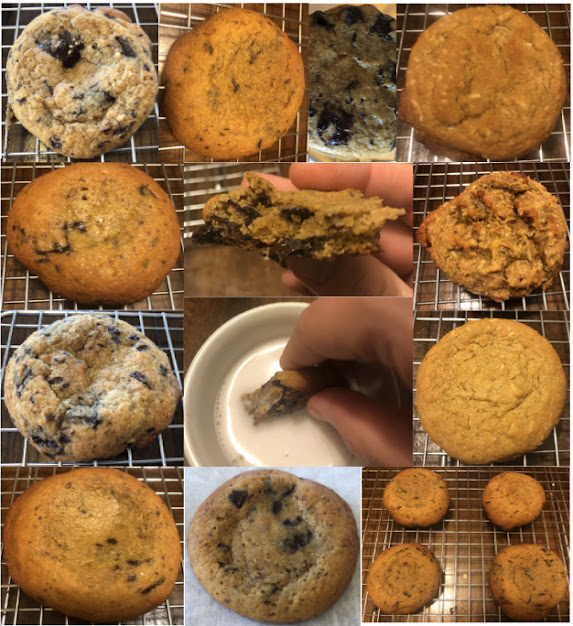
Note: This is an updated version of my previous post on this recipe. Since my first attempts, I’ve tried out 10 new batches, with big improvements in taste and texture. I also worked out a low-calorie version with shredded coconut instead of chocolate.
I’ve been trying to work out a low-carb chocolate chip-cookie dough ice cream to go along with my other ice cream recipes, but I haven’t liked any of the low-carb cookie dough recipes I’ve found on-line. All of them either didn’t really taste like a traditional chocolate chip cookie dough or were too soft even when frozen.
Since the oat-fiber muffins turned out so good, I decided to see if I could use an oat-fiber/whey protein base to make a cookie dough. The results turned out surprisingly good for a first attempt. Still needs some work, but I thought I’d share now to get some advice before I keep developing.
Initial Adaptation
As a starting point, I based my recipe on the classic Nestle Toll House cookie, with the following modifications:
- Flour → 80g oat-fiber + 44g whey protein + 16g gluten (same ratio as my oat-fiber muffins)
- White sugar → allulose (1:1 by weight)
- Brown sugar → allulose (1:1 by weight) + molasses (10% of sugar by weight, adapted from here)
- Chocolate chips → 1 cup shredded coconut (I didn’t have any sugar-free chocolate chips, wouldn’t have done this otherwise.
- Added 50% more egg to get to the right dough consistency.
- Added a sprinkle of flaky sea salt to the top of the cookie before baking.
This was a pretty good start:
- Good:
- They tasted very similar to chocolate chip cookie dough (minus the chocolate)
- They froze to a good texture.
- While not as good as chocolate chips, the shredded coconut gave a nice flavor and texture to the dough.
- Con:
- When baked, the cookies puffed up and had more of a bread/muffin texture than a cookie texture.
- The amount of coconut was more than I’d like.
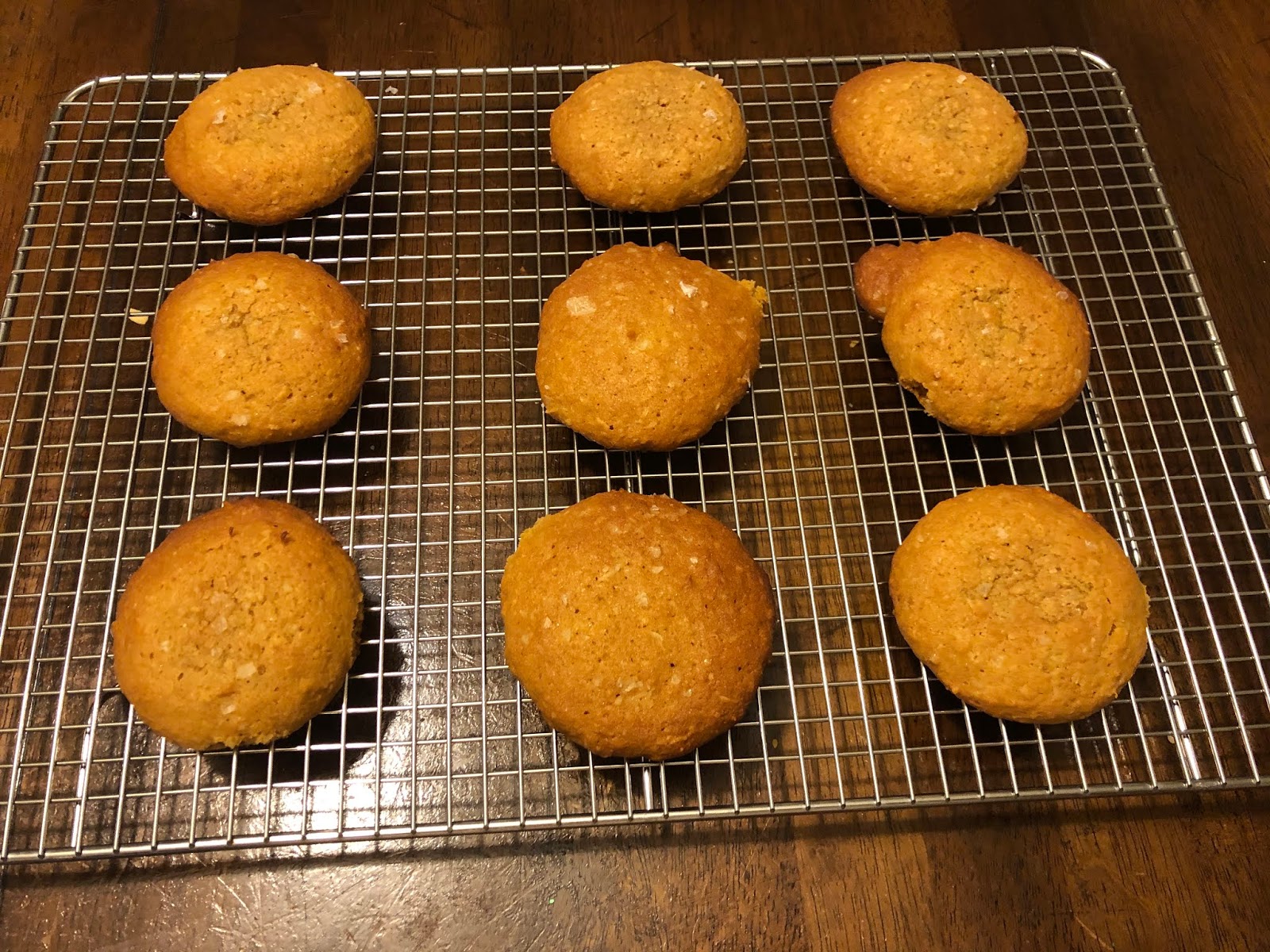
To fix the texture problem, I made the following changes:
- Removed gluten (it prevented the muffins from deflating, so removing it should reducing “puffing”)
- Went from 2 eggs to 1 egg + 1 yolk (less egg white should give a less stable structure)
- Halved the amount of coconut.
This was a big improvement. The taste of the dough stayed the same, but the cookies spread and gave a texture very similar to a chewy chocolate chip cookie.
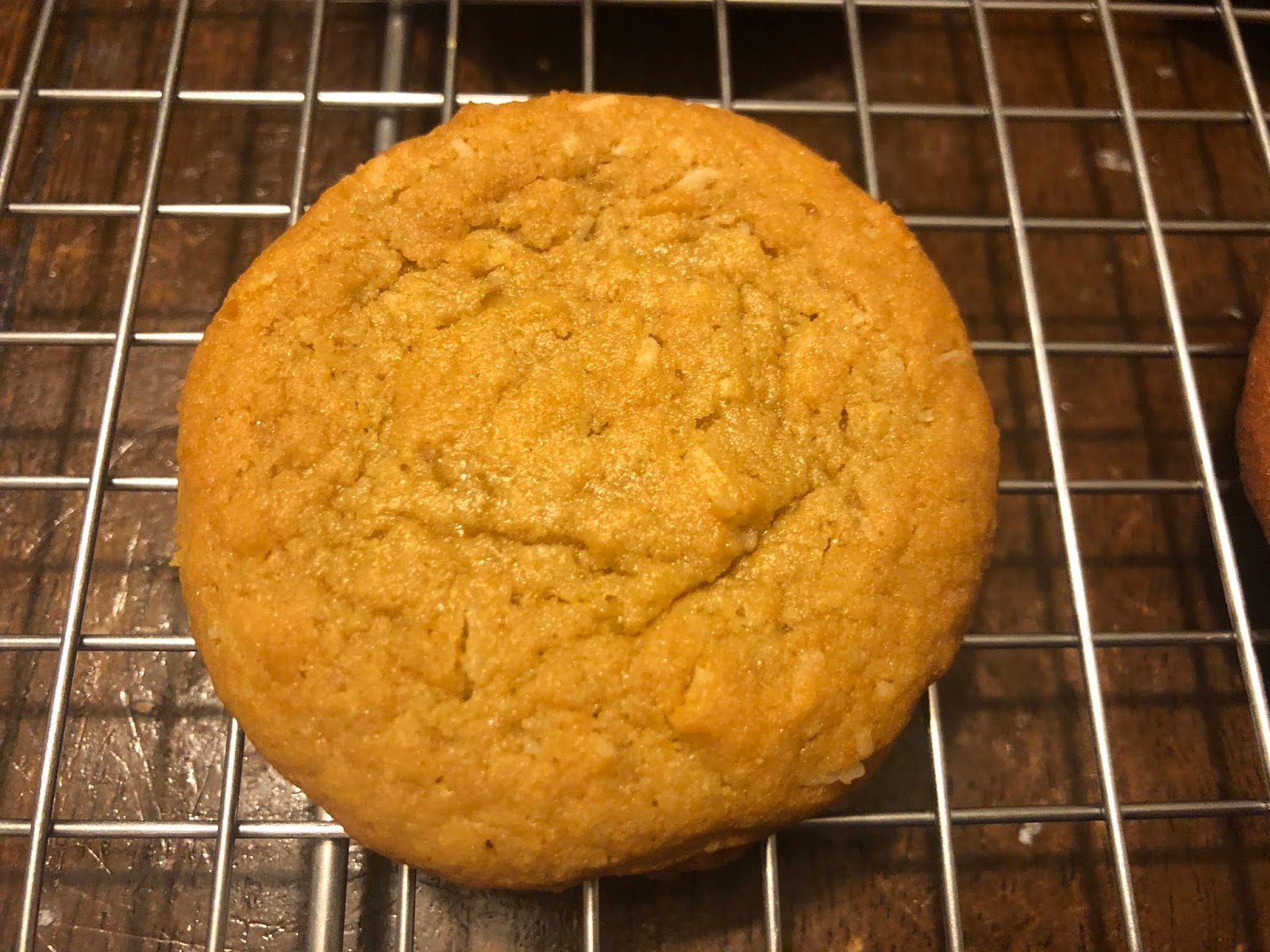
This will work great for cookie dough ice cream. For cookies, though, I prefer a crisper cookie. Based on recommendations for regular chocolate chip cookies, there’s a few options on how to do this:
- Reduce the molasses content (would help the carbs count, but probably make it taste worse. Could try substituting some “brown sugar” erythritol instead?)
- Lower the temperature to let the cookies spread more before setting
- Reduce the amount of egg white (hard to do as I’m already at 1 egg, but I could add yolks and whites separately).
At this point, I posted the recipe to r/ketorecipes on Reddit and got additional suggestion to try a blend of erythritol and allulose (erythritol for crispier texture, but keep some allulose to mitigate “cooling effect”).
Round 1: Optimizing Texture
Based on the ideas above, I tried the following experiments:
- All: I bought some Montezuma 100% cocoa chocolate from Trader Joe’s (surprisingly not bitter!) and used that in all recipes. I really l like the taste and texture it adds, particularly the contrast with the sweet taste of the cookie.
- Reduced baking temperature and increased time (375 °F/11 min., 350 °F/13 min., 325 °F/15 min., 325 °F/16 min.)
- Taste: no change
- Texture: no significant change, maybe slightly less chewy…
- Spread: no change
- Conclusion: Original time/temp (375 °F/11 min.) is best
- Went from 1 egg + 1 yolk to 2 yolk, plus added 10 g almond milk (needed to get dough to correct consistency)
- Taste: creamier, less drying
- Texture: slightly crispier
- Spread: Much more spread during baking, similar to a regular cookie
- Conclusion: Definite improvement in taste and I prefer the more spread out/thinner shape
- Replace 50% of allulose with erythritol
- Taste: no change (no perceptible cooling effect)
- Texture: much crispier
- Spread: no change
- Conclusion: Much closer to my preferred texture
This was a big improvement in just a few tries and pretty close to what I wanted. I had originally planned to try out a bunch more variations (flour:fat & flour:protein ratio, amount of molasses, type of protein, etc.), but these were so good I decided to just combine the improvements and see if that did the trick.
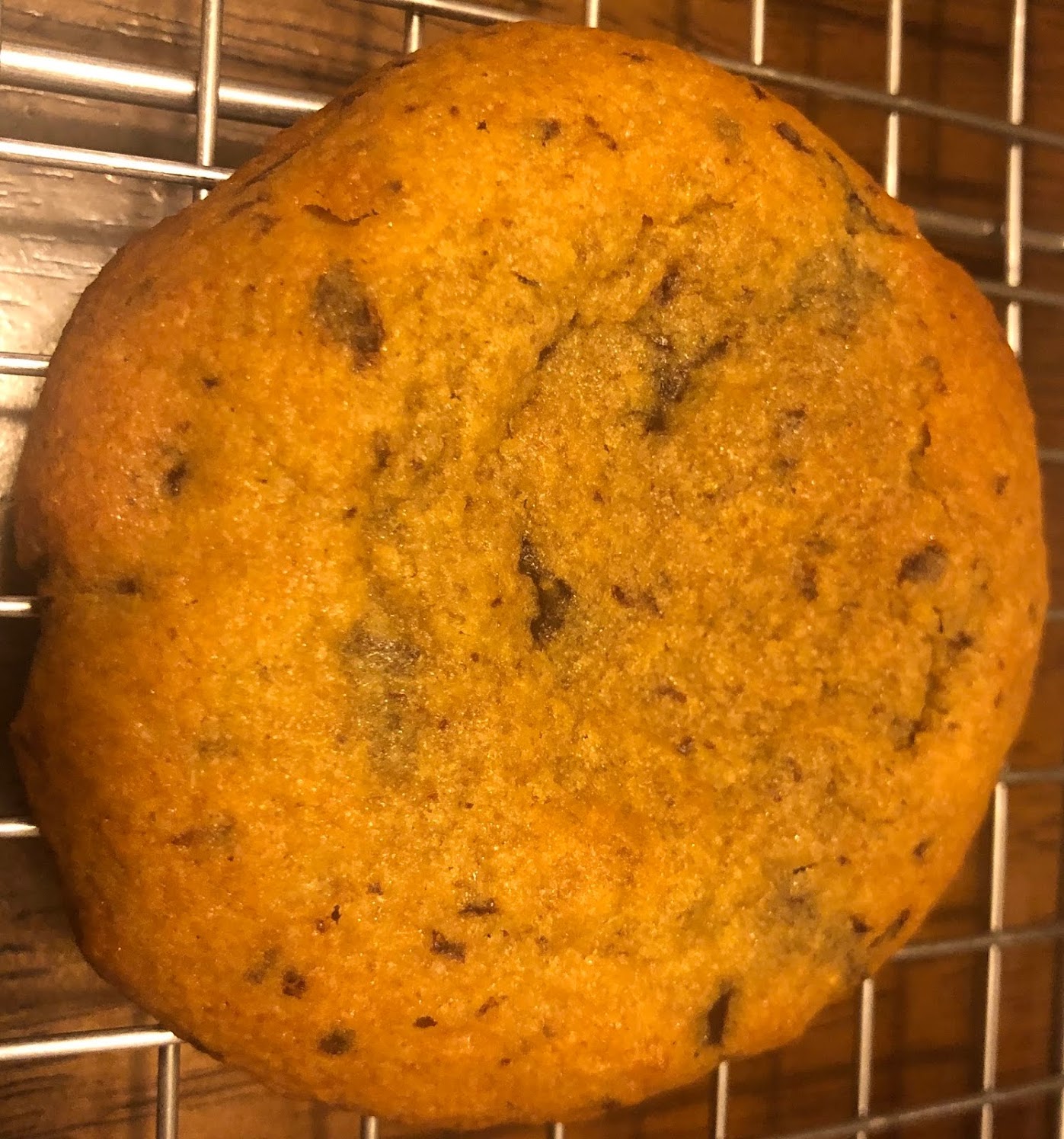
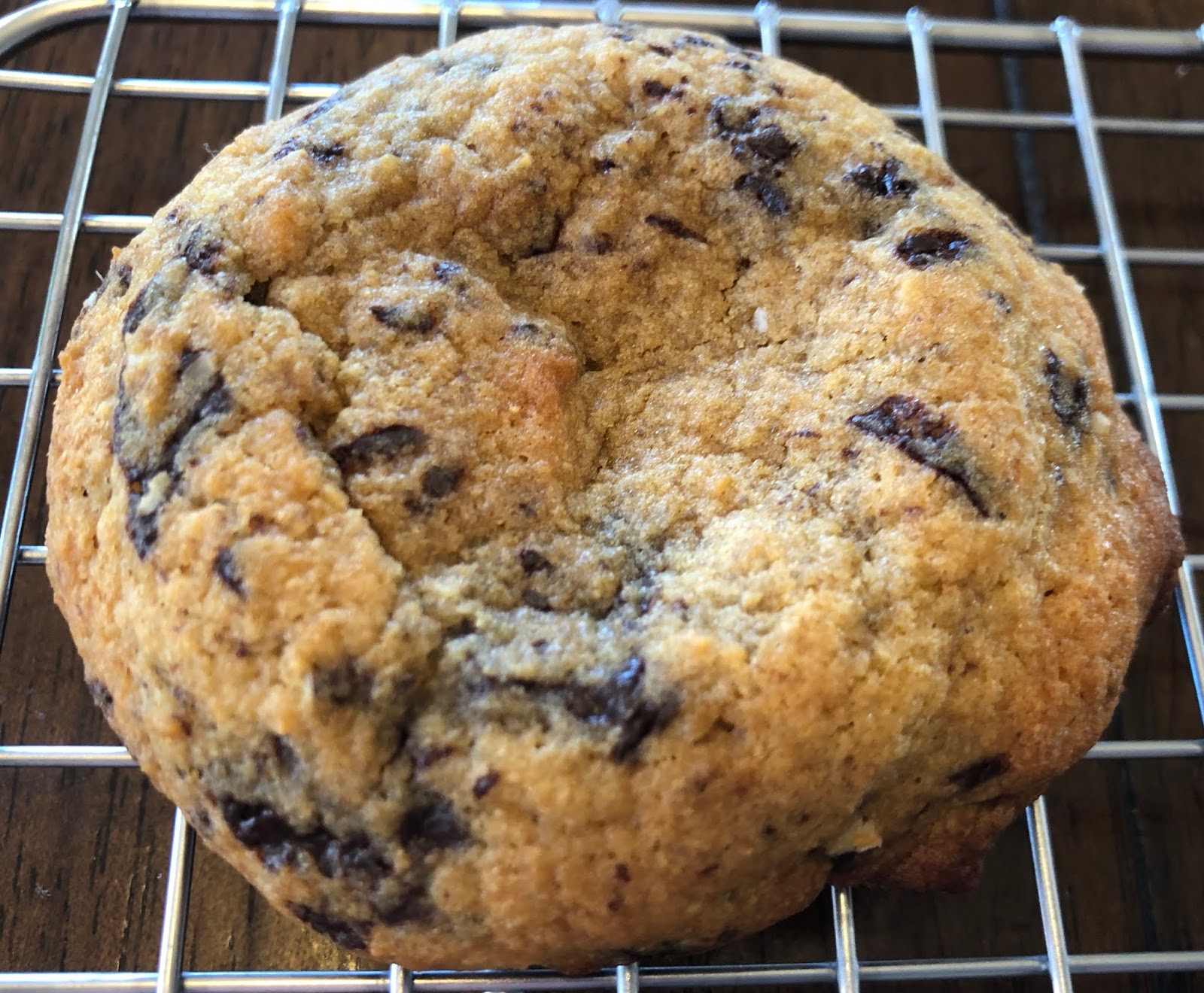
Round 2: Combining Changes & Low-Calorie Version
Based on the success of round 1, I made a batch combining all the improvements together. I also made a couple batches using yogurt and shredded coconut in place of the butter and chocolate to reduce calories.
- 2 egg yolk + 30 g almond milk + 50% erythritol
- Taste: Fantastic, really tastes like a Nestle’s toll house cookie.
- Texture: crispy on the edges, soft/chewy on the inside. I’d prefer a little crispier, but this is great.
- Spread: Just like a regular chocolate chip cookie
- Conclusion: Got the combined improvements from Round 1. While it could always improve, this was almost exactly what I was looking for.
- Replace butter with yogurt & chocolate with shredded coconut. Removed almond milk (dough was already too “wet” before adding)
- Calories: Drops from 106 to 36 calories/cookie
- Taste: Not as good as the butter/chocolate version, but pretty good. Much “lighter”.
- Texture: Way too “bready.” Must be an effect of the yogurt.
- Spread: Much less
- Conclusion: Ok for a first try, but the “bready” texture is a real problem. Will try less yogurt.
- Same as above except half as much yogurt + 10g almond milk
- Calories: Drops from 106 to 36 calories/cookie
- Taste: Same. Not as good as the butter/chocolate version, but pretty good. Much “lighter”.
- Texture: Back to normal. Crispy on the outside, chewy on the inside.
- Spread: Still didn’t spread as much as the butter/chocolate cookie, but not a big deal.
- Conclusion: This was great. I prefer the taste of the chocolate/butter based cookie, but I can eat a lot more of these. Will definitely make again.
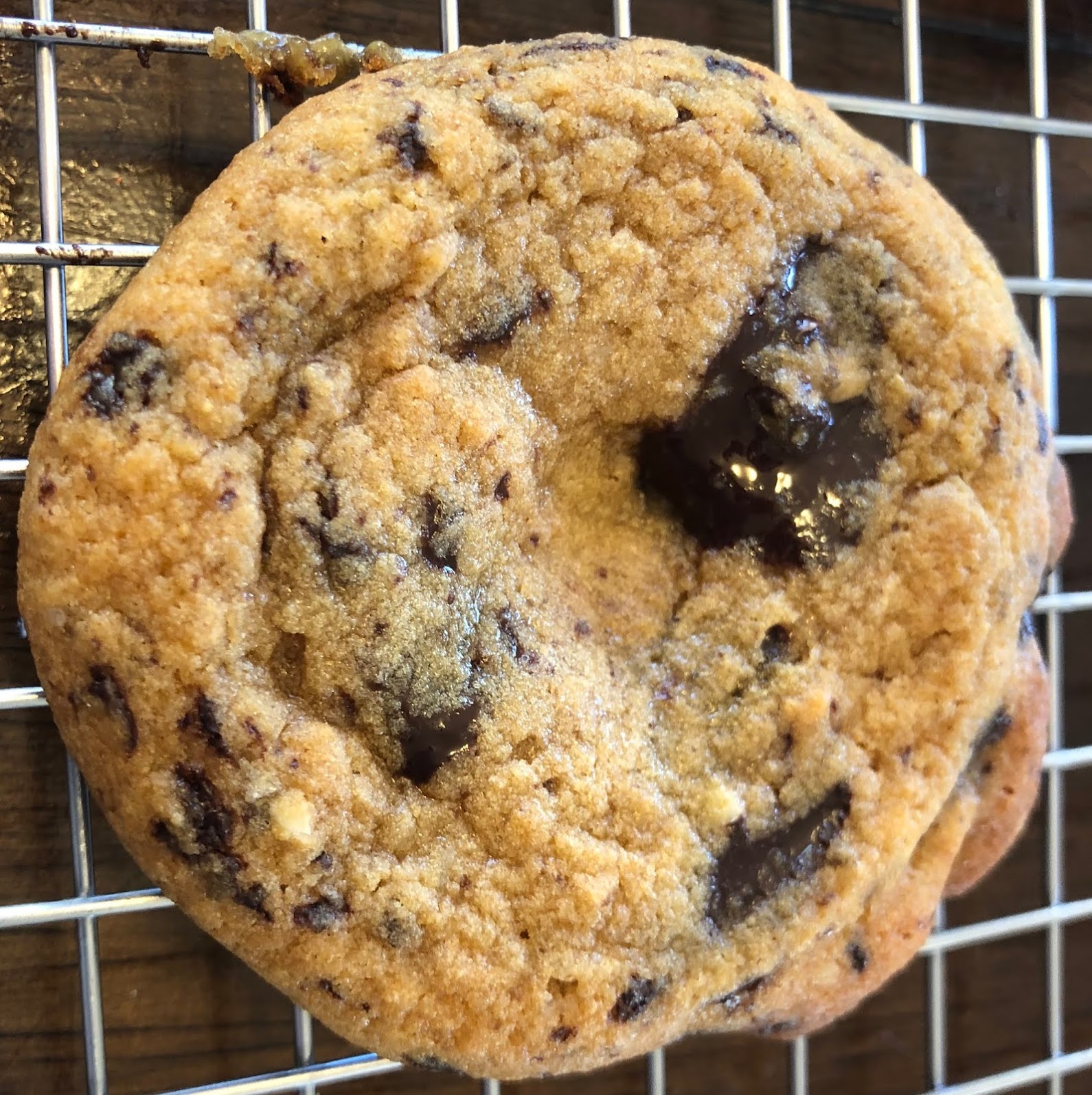
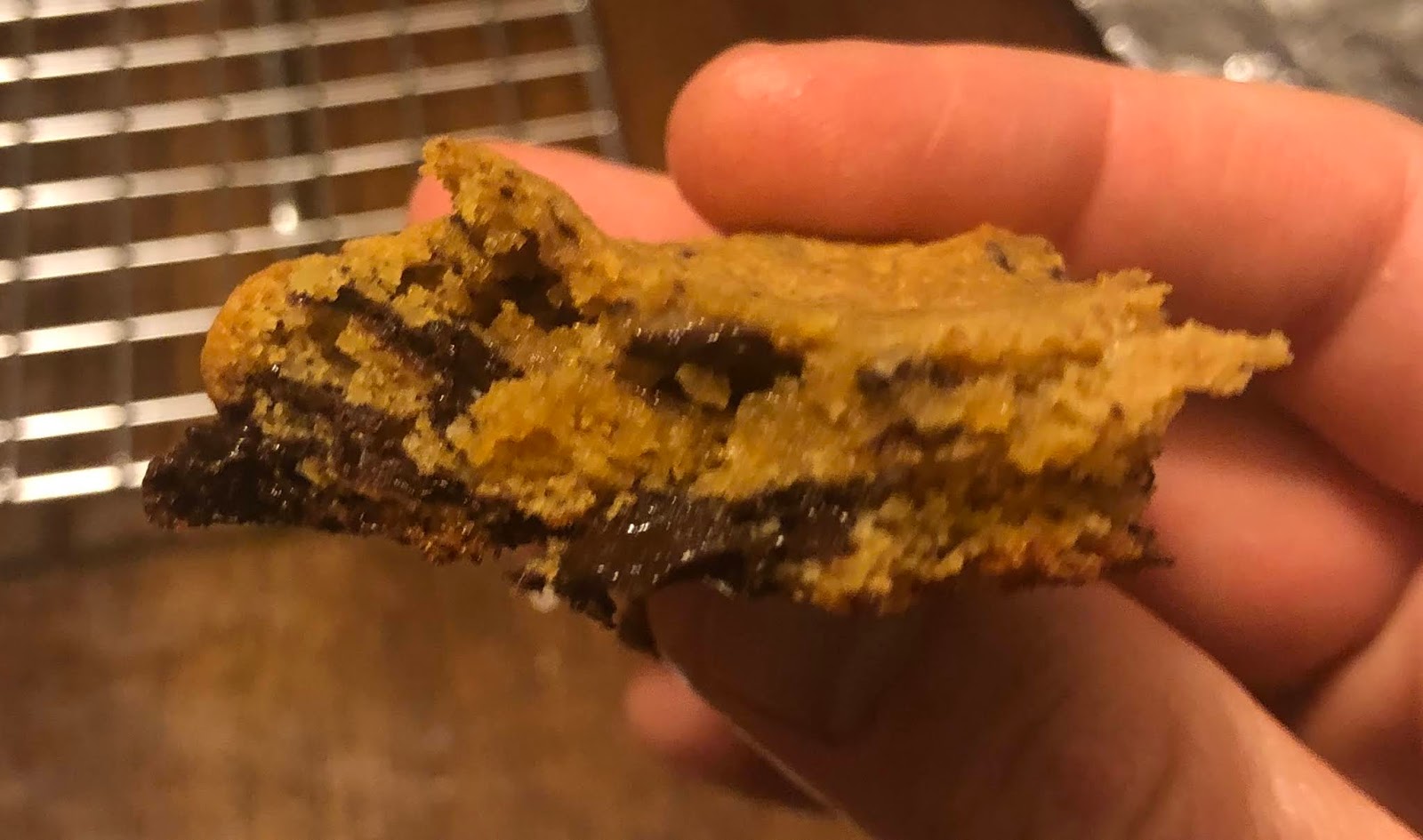
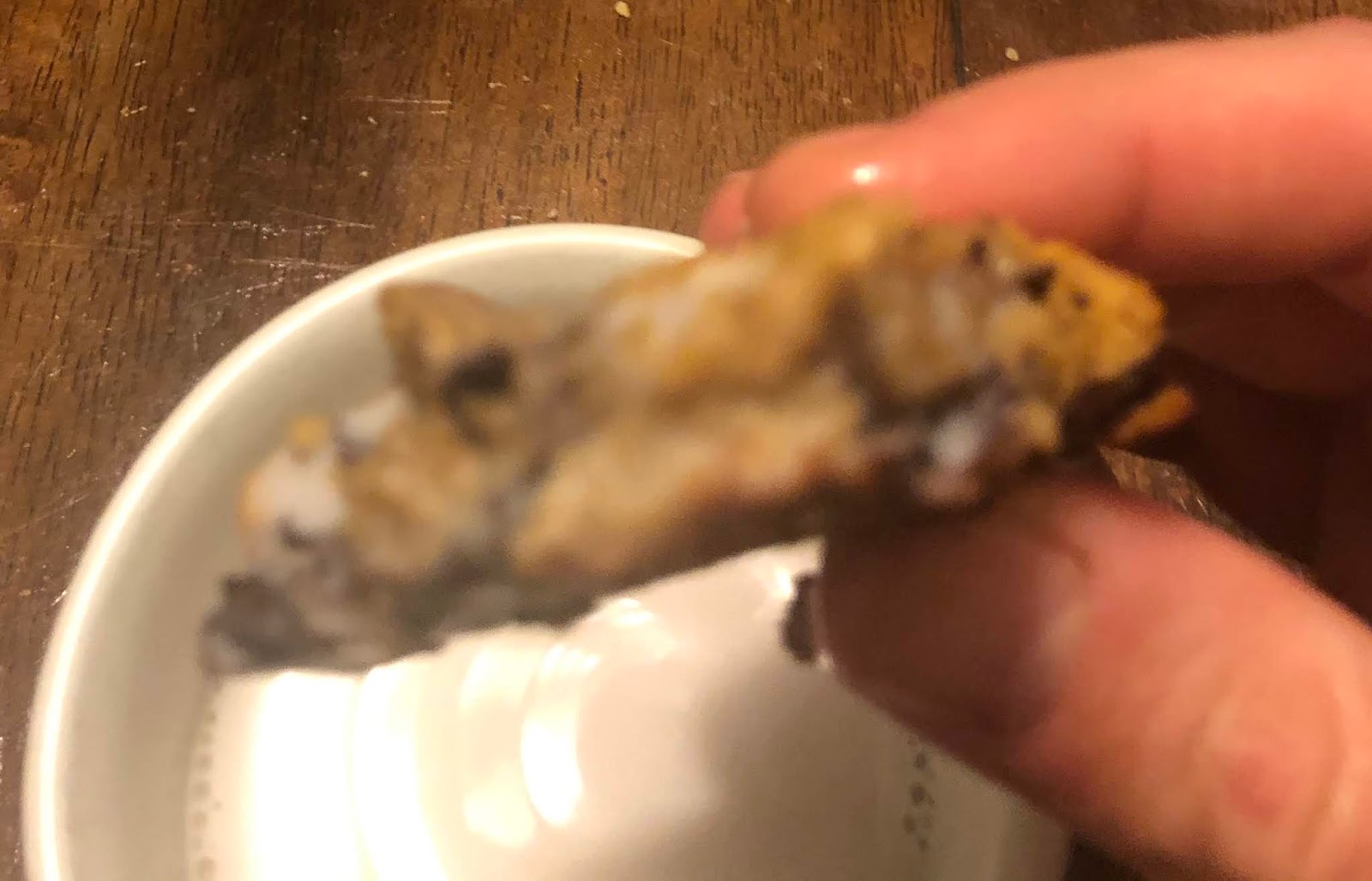
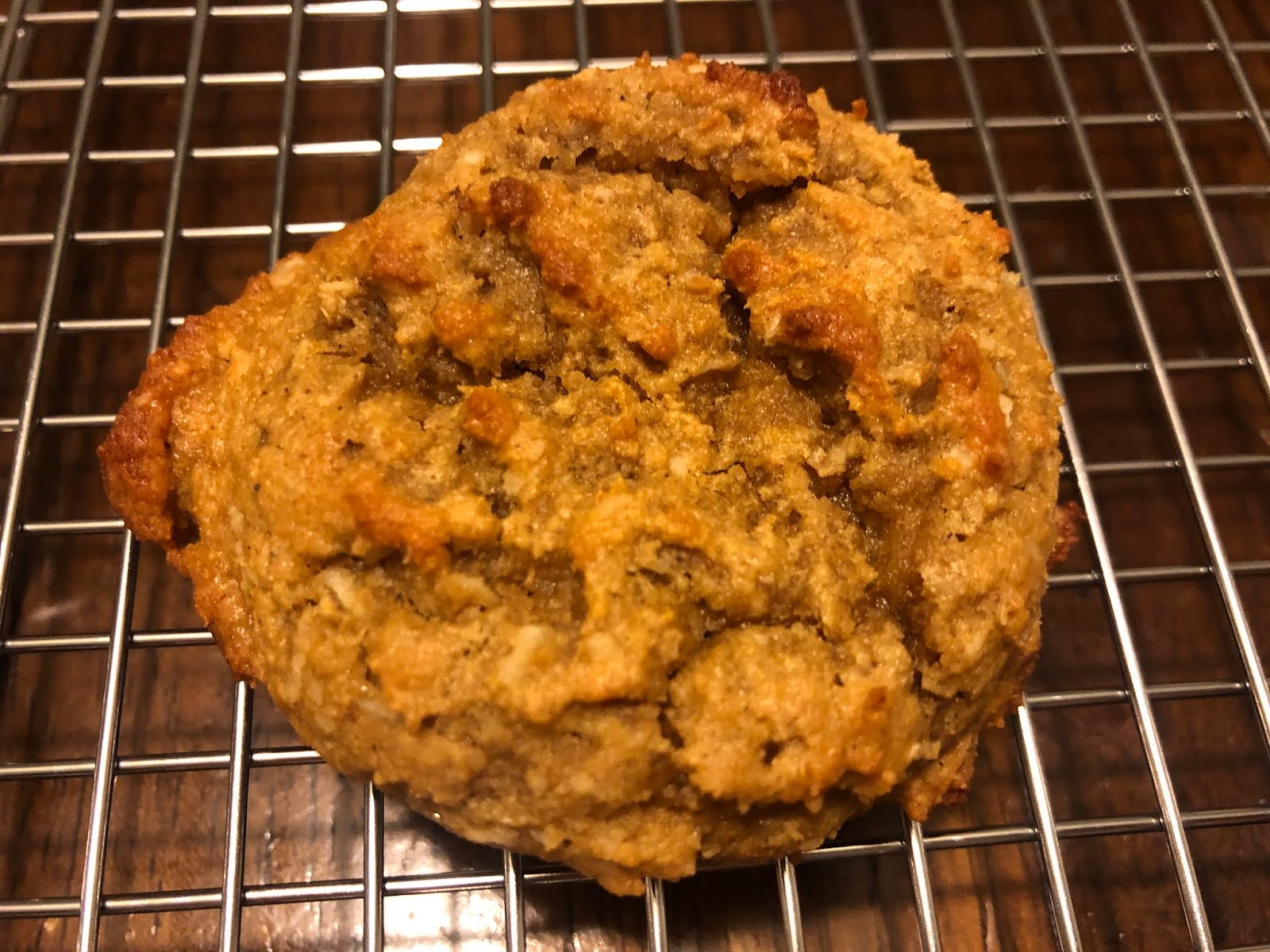
My original plan was to do a whole bunch more batches with different substitutions and varying ratios, but I’m really happy with how these turned out. I might come back to this recipe in the future if I want to really dial it in or get a different effect, but for now I think I’ll leave it as is and start working on something else.
Hope you enjoy it,
– QD

Low-carb Adaptation of Nestle Toll House Cookies
Ingredients
- 80 g oat fiber
- 44 g whey protein isolate
- 0.5 tsp baking soda
- 0.5 tsp salt
- 1 stick butter, room temperature
- 75 g allulose
- 75 g erythritol
- 7.5 g molasses
- 1 tbsp. vanilla
- 2 egg yolks
- 30 g unsweetened almond milk
- 100 g chocolate, chopped (I like Montezuma brand with almond & sea salt)
Instructions
- Preheat oven to 375 °F.
- Whisk together oat fiber, whey protein, baking soda, and salt.
- Cream butter, allulose, erythritol, molasses, and vanilla with a stand or electric mixer.
- Beat in egg yolk and almond milk, then slowly beat in oat fiber mixture, then fold in chopped chocolate.
- Transfer to a lined baking sheet (I use a 1″ cookie scoop) and bake for 11 min.
- Let cool on a wire rack, then serve.
Notes
Nutrition

Low-carb, Low-calorie Coconut Cookie
Ingredients
- 80 g oat fiber
- 44 g whey protein isolate
- 0.5 tsp baking soda
- 0.5 tsp salt
- 55 g yogurt
- 75 g allulose
- 75 g erythritol
- 7.5 g molasses
- 1 tbsp vanilla extract
- 2 egg yolks
- 10 g unsweetened almond milk
- 40 g shredded coconut
Instructions
- Preheat oven to 375 °F.
- Whisk together oat fiber, whey protein, baking soda, and salt.
- Cream yogurt, allulose, erythritol, molasses, and vanilla with a stand or electric mixer.
- Beat in egg yolk and almond milk, then slowly beat in oat fiber mixture and shredded coconut.
- Transfer to a lined baking sheet (I use a 1″ cookie scoop) and bake for 11 min.
- Let cool on a wire rack, then serve.
Hi there I tried the recipe for the yogurt low cal cookies and it came out dry and cakey. Any tips on how to make it like your photos? Or specific yogurt brand that is best? When I was doing step 3 the ingredients didnt cream together. And the mixture was very dry at the end and I had to add more water. Could it maybe be the oat fiber brand?
Best,
Dana
My best guess is it’s the oat fiber. I’ve had to re-optimize the recipe when I switched sources. I used Anthony’s brand and have generally found them to be both consistent and relatively low-cost.
If you’re trying to make your brand work, I’d try reducing the amount of oat fiber and/or increasing the yogurt.